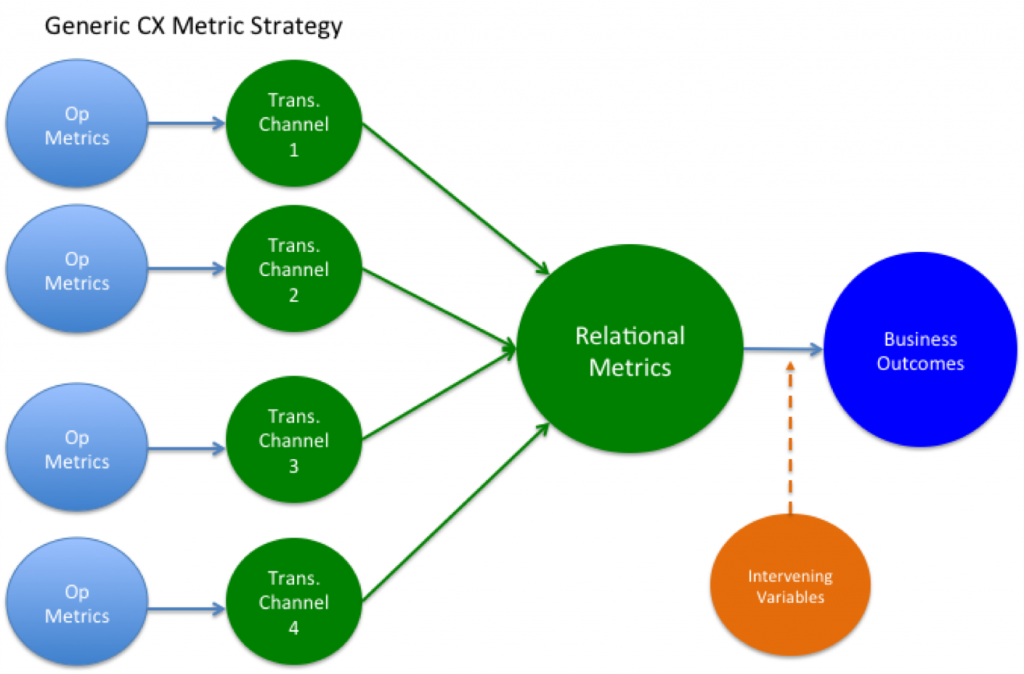We set organizational goals for one reason; to motivate individuals to act. It is a way forward. If you don’t know what your goal is, you are never going to reach it. In setting goals and performance management systems there are some notable “dos” and “don’ts” that you should consider.
Chose the Outcome You Want
Oftentimes the question of “what is the best metric to use in CX?” comes to my inbox. The answer to that question is invariably “It depends on what you are trying to do.” You don’t look at your oil pressure gauge to determine how fast you are driving, why would you use only one measure for your CX program?
Work backwards. What are you trying to influence? Is it retaining customers, gaining news ones, share of wallet expansion, or increasing frequency of purchase? What customers are you talking about specifically? Once those questions are defined and operationalized then you can start thinking about what metrics to use that can help monitor your progress to your ultimate business goal.
Select the Right Metrics
Once you have identified your business outcomes, then you can identify some the probable antecedents and/or surrogates for that outcome. Typically these metrics come in four flavors in the CX world:
– Customer behavioral intentions (e.g., NPS, would return, etc)),
– Customer attitudinal transactional ratings (e.g. ratings, OSAT, CES)
– Customer attitudinal relational ratings (e.g., ratings, CES, OSAT)
– Employee behaviors (# of closed hot alerts, # of action plans)
Behavioral intentions are just what they sound like…we ask customers about their planned behavior; whether that is to return, to recommend, or a number of other “woulds”.
Transactional attitudinal measures are point-in-time and can tracked to a specific interactions with the brand. Relational measures are those that ask about the overall relationship with the brand and are more general .
Finally, some metrics are about the antecedent to actions thought to impact the customer and ultimately the business outcome. For example, agents resolving concerns, hot alerts being acted upon, and action plans being created are all instances of self-reported behaviors.
A CX Metric System
I recommend trying to organize these into a relational system of measurement which both informs the organization of what is going on at various touchpoint along the journey and is also interconnected.

Ideally the system is created and validated using statistical modeling so that operational metrics (e.g., wait time on hold, fill rates, etc) are predictive of transactional evaluations and these in turn are predictive of the overall evaluation of the brand. Relational brand measures are then predictive of your intended business outcomes, moderated by outside variables (market conditions, individual differences, etc). Once this is established you then have a complete system to understand what levers will make the biggest impact in improving your business outcomes.
Don’t freak, you don’t have to do ALL this to set goals from the get go, but systems designed this way tend to have the biggest impact. We do, however, have balance “predictiveness” with the other three Ps of CX metric design: pragmatism, parsimony, and politics.
Designing to Motivate
Regardless of your metric strategy, how your CX goals are structured are important in creating a system that can create meaningful change. You want your CX system to be defensible, robust, and motivational. Best practices in performance management design for CX systems are ones where:
– Metrics are tied to improvement, benchmarks, and/or business outcomes
– They avoid “one number” approaches and use a blended index approach
– Has a tiered reward approach and avoids “all or nothing’ pay out strategies
– Do not use “top box” or other measurement truncations (why throw out good information?)
– Goals are specific, measurable, agreed upon, reachable, and time bound (SMART)
– Goals are clearly communicated and understood to those held accountable
– Regular and timely feedback on how the person is performing against the goal
– The system is consistently applied to all participants (i.e., no “special instances”)
– There are stated policies that are consistently enforced around attempts to manipulate the score (i.e., cheat)
So don’t be fooled by that one number promise. It can and does backfire. Also, don’t let anyone talk you into that there is one “magic index” that will solve your problems. Each organization is different, with different customers, different challenges, and different business goals. The magic in designing goals is not in finding that perfect number, but creating a system that is maximally motivational and unique to your organization and helps you achieve that ultimate business outcome.



